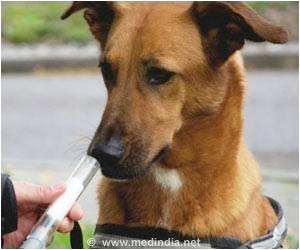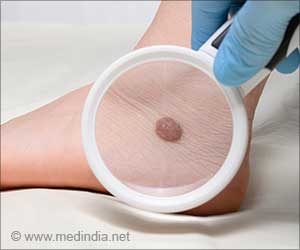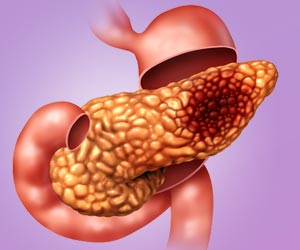Trained beagle dogs can identify non–small cell lung cancer in its primary stages as they have highly developed olfactory systems which could be used to identify biomarkers linked to various types of lung cancer.

‘Beagles can successfully identify lung cancer through scent. The dogs' abilities may lead to the development of safe, effective, and inexpensive means for mass cancer screening.’
Read More..




"We're using the dogs to sort through the layers of scent until we identify the tell-tale biomarkers," says Thomas Quinn, DO, professor at Lake Erie College of Osteopathic Medicine and lead author on this study. "There is still a great deal of work ahead, but we're making good progress."Read More..
The dogs were led into a room with blood serum samples at nose level. Some samples came from patients with non-small cell lung cancer; others were drawn from healthy controls. After thoroughly sniffing a sample, the dogs sat down to indicate a positive finding for cancer or moved on if none was detected.
Dr. Quinn and his team are nearing completion of a second iteration of the study. This time the dogs are working to identify lung, breast, and colorectal cancer using samples of patients' breath, collected by the patient breathing into a face mask. Researchers say findings suggest the dogs are as effective detecting cancer using this method.
The next step will be to fractionate further the samples based on chemical and physical properties, presenting them back to the dogs until the specific biomarkers for each cancer are identified. The goal is to develop an over-the-counter screening product, similar to a pregnancy test, in terms of cost, simplicity, and availability. Dr. Quinn envisions a device that someone can breathe into and see a color change to indicate a positive or negative finding.
Early detection key
Advertisement
Additionally, screening and imaging for lung cancer is costly and not always reliable. Chest X-rays have a high false-negative rate, while CT scans with a computer-aided diagnosis have a high false-positive rate. Previous studies indicated that 90% of missed lung cancers occur when using chest X-rays, and CT scans have difficulty identifying small, central, juxtavascular lung cancers.
"Right now it appears dogs have a better natural ability to screen for cancer than our most advanced technology," says Dr. Quinn. "Once we figure out what they know and how we may be able to catch up."
Source-Eurekalert















